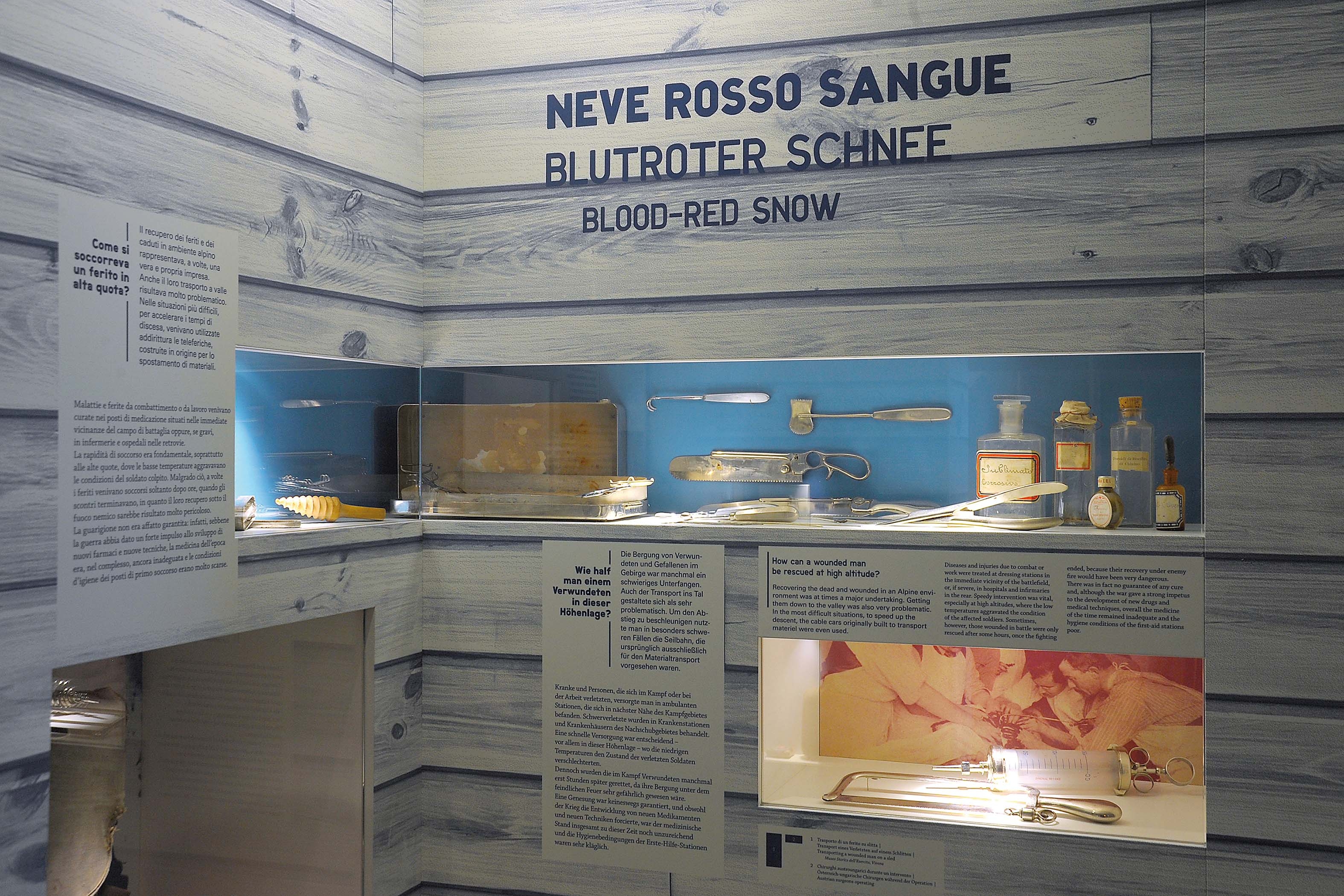Centenary News profiles Marmolada Grande Guerra, a museum remembering Italian and Austro-Hungarian troops who fought in the ice and snow of the Dolomite Mountains.
Located in a cable car station close to the Marmolada Glacier, at an altitude of 3,000 metres, the museum claims the distinction of being the highest in Europe.
Its origins date back 25 years, but the site was expanded and completely redesigned in 2015 to mark the centenary of Italy entering the First World War.
The aim is to reflect the soldiers’ view of fighting in the harshness of the high Alps, conditions very different from the conventional ‘mud and trenches’ image of the Great War.
Marmolada, the highest peak in the Dolomites, lay on the Alpine front line, straddling the border between Italy and the Austro-Hungarian Empire.
Repeated battles were fought in these mountains in 1916/17.
Avalanches and intense cold were constant threats.

(Photo: Marmolada Grande Guerra museum)
Cableways had to be used to ferry ammunition, food and other supplies to troops in the most inaccessible locations. Today, the cable car is the only way to reach the Marmolada Grande Guerra Museum.
Austrian troops dug a complex maze of tunnels, nicknamed the City of Ice, into the heart of the glacier while the Italians built a fortress on the Punta Serauta Massif, using a network of caves connected by rock walkways.
Marmolada Grande Guerra features ‘symbolic reconstructions’, as well as extracts from diaries and letters, to tell the stories of soldiers pitted against both the enemy and the elements.
Simulators allow museum visitors to get a sense of the cold and difficulties of breathing at altitude.
Large windows look out onto the glaciers and former front line positions.
During the summer, it’s possible to visit the fortress of Punta Serauta, occupied by the Italians in the spring of 1916.
Traces of the war are still emerging from the ice in a region officially declared to be a sacred memorial area.
For more details, visit the Marmolada Grande Guerra museum website. The museum is open from December -April, and from June-September.
Information & images supplied Marmolada Grande Guerra museum
Posted by: Peter Alhadeff, Centenary News
